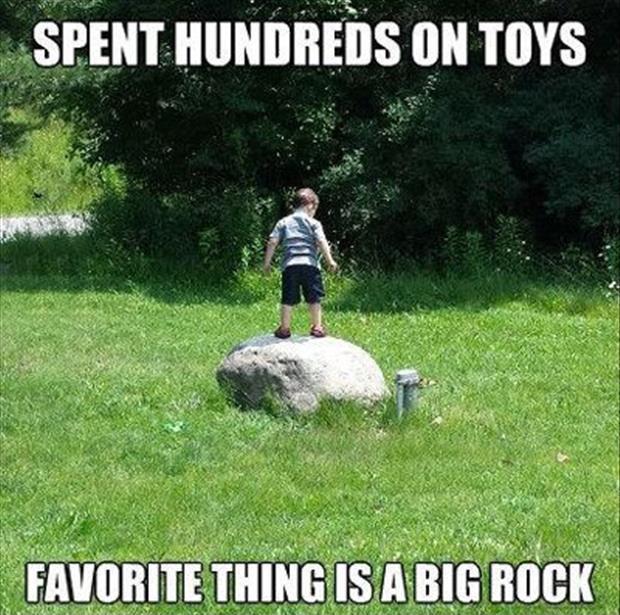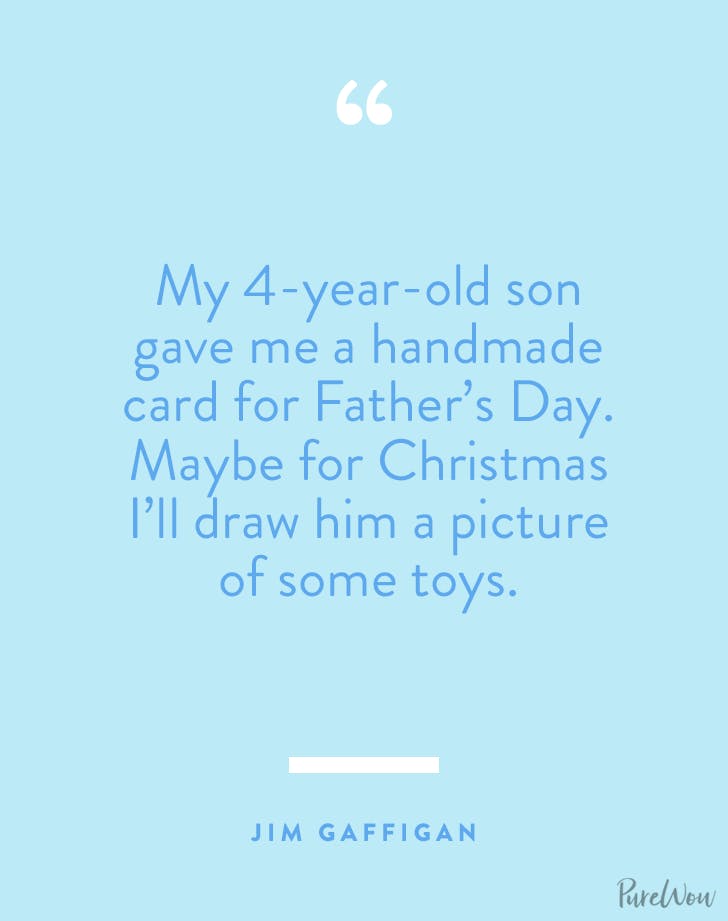Controlling the Clutter: Part 1 - Kids’ Stuff
Nov 19th 2021
Clutter. It’s everywhere. Granted, it’s one thing if you have a little too much stuff here and there. It’s a whole other thing if your living space looks more like a thrift store than a home.
Clutter may seem like a strange topic for us to write about, but the bottom line is we’re in the business of simplifying life and making it just a little more organized. And while a planner insert can’t make clutter magically disappear, a few practiced habits and tips can. And there’s no better time to put a few new routines in place than in preparation for the holidays when people are gathering together (and loads more stuff seems to creep in!)
What is Clutter?
Clutter can mean different things to different people, but generally most of us would agree that clutter is essentially extra. It’s extra stuff, or too much stuff, or unnecessary stuff, or unused stuff. And frankly, it is stuff that somehow creeps into our houses, seemingly multiplying and becoming ingrained into our day-to-day lives without us really even realizing it.
Regardless of how overrun you feel your house is with clutter, there’s generally room for all of us to purge and organize a variety of spaces in our homes. In fact, there are so many different areas to tackle, that we’re going to tackle those different areas over the next several months.
For now, it seems most fitting to start with kids’ stuff. Since Christmas is just around the corner, November is the perfect time to create a space for everything you have and allow extra room for new things that will be added soon. It’s also the perfect time to create criteria about toys that have true value for your kids to help you make more discerning choices for Christmas purchases.
Why Bother?
Toys, games, books, crafts, and puzzles can all be great. They provide entertainment and education. They keep kids occupied and distracted. They allow for creative play. But like most things in life, kids’ “stuff” can quickly get out of hand. As adults it can get overwhelming to have too many options and choices and items surrounding us. Wouldn’t it be the same for our kids?
There’s no doubt that tackling clutter, especially toy clutter, is difficult, and frankly it can feel easier to just avoid the task altogether. But there are some definite benefits—both to you and to your kids—to clearing toy clutter out of your lives:
- Children can focus better and have more purposeful, deeper playtime because they have fewer distractions and are less overwhelmed and overstimulated.
- They are able to be more creative with fewer toys and ones that allow them to flex their imagination because they use their resourcefulness to create their own fun.
- Kids become more active in their play. (Many toys that sing, light up, dance, etc. allow kids to become passive observers rather than active participants in their play.)
- Children take better care of their things because they view what they have as quality items rather than an overwhelming amount of endless stuff.
- They learn responsibility and independence when they can put their things away more easily and more consistently on their own.
- The household is less stressful and chaotic. It doesn’t take long for toys to take over the house. Keeping this in check means less mess, and less mess means less stress!
Simply put, eliminating the quantity of toys allows you to focus on the quality of toys. And that’s a win for everyone.

The Purging Process
When it comes to purging the kids’ stuff, sometimes it’s a good idea to have your kids help with the process. Items in good condition sell well during this time, so perhaps you can motivate your children to part with things by listing them on a resale site and giving the kids any money from the sales. Or, there’s also nothing wrong with donating the items—less hassle—and paying your kids a few dollars for their efforts regardless. (Need another creative idea? Be sure to check out the “Santa’s Sack” section below!) Regardless of your method, it’s often helpful if you do an initial purge yourself, especially with kids who are really young, are attached to things, or get easily overwhelmed. Know your criteria of what is worth keeping (check out the tips below) and do an initial sort of items without your kids around. Create a “maybe” pile/bin and have them pick what to keep from there. (If you’re worried about purging without permission, consider keeping items boxed up in the attic or garage for a few weeks. If no one asks for it or even notices it is gone, you can feel confident about getting rid of it.)
A true toy purge is a whole-day (whole-week?) affair of collecting all the toys, sorting them in one location, and going through each stash piece by piece. It is both effective and exhausting. However, you don’t have to do it that way, at least not for the initial steps of pairing things down. So, whether you’re working alone or with your kids, remember to keep it simple. Rather than tackling a whole room or a whole closet, pick one shelf or one bin and start there. Set a timer for 10-15 minutes to focus on that small area, make some decisions, and then come back another time to keep making progress. Those small steps will help to get the ball rolling and allow the harder decision making later to go more smoothly.
Kids Toys and Games
Purging toys can be tricky, especially if you have kids at multiple ages. But if you give things a critical look, it will help you be more deliberate in your choices. To do so, it’s helpful to create criteria for what a meaningful, worthwhile toy is for your family. That criteria will differ for each family, but most experts have found that the best toys are the ones that
- allow for open-ended play (basic toys that can be used in many ways, such as blocks, magnatiles, balls, cars, etc.)
- do not light up and play music in a way that plays for a child (and also calls them back to passivity once they’ve walked away)
- are played with regularly by your child—ones that are valued and looked for when they’re missing
- spark creativity, joy, exploration, and life experiences
For example, if a toy is unusable without six D-batteries, or it lights up and blasts music at ridiculous levels, it deserves a critical look. If a toy has a single specific use and doesn’t hold interest or spark creativity, it might need to go. If you know you spent $75 on an educational book system that turned out to be a dud, it’s okay to let it go, even if it gives you a nauseous feeling in your stomach. Remember, there is freedom in freeing up space. Excess stuff adds weight to our lives.
Start with the easy stuff: toss out the junk. That means party favors, kid’s meal toys, broken cars, that foam ball with a chunk torn out of it. You get the picture. Walk through your child's space with a trash bag and be firm with yourself. Next, focus on excess and multiples. If you have three different race tracks, keep one or two. If a kid’s room is overrun with stuffed animals, ask them to keep their 10 favorites. If you have a set of blocks that no longer fits in the bin you have it in, pair it down to an amount that will. Perhaps your child has over 50 matchbox cars. Shrink it down to half. The value of what is remaining will stay the same and the ability to use it and clean it up will improve!
When it comes to games and puzzles, are there ones your kids have outgrown or truly never choose to play or put together? Put them aside. What about those items where several pieces are missing? If you haven’t found them by now, chances are you aren’t going to. Let those ones go. If you find that you have two sets of Uno, or Monopoly in three different versions, only keep one. Take your decks of cards and put them into their suit sets. If you are missing cards, toss that set.
Kids Books and Magazines
Are your bookshelves stuffed to capacity? An easy place to start is with damaged books. Are the pages falling out? Did a bottle of water spill on it a month ago? Has the cover been taped together three different times? It’s okay to recycle these books. Perhaps you don’t realize how many board books are still taking up residence in your daughter’s room, but she’s now four and able to have big girl books. If your child has a magazine subscription (or two or three), recycle any copies that are over three months old. Again, once you do an initial sweep, allow your children to look through your maybe pile and keep a set allotment of books—whatever number you pick, stick with it.
The Santa Sack Method Melissa Corriveau, author of the website “Life with Less Mess” has shared a clever idea for helping young kids part with their stuff and make room for the new toys Santa might bring. Grab a big sack—a Santa Sack, of course. Have your kids place their toys, games, art supplies, drawings, etc. into this Santa Sack. On Christmas Eve (or earlier if you have a friendly Elf on the Shelf who can deliver the items ahead of Christmas!) Santa will take these toys back to the North Pole so that the Elves can fix them up like new and pass them along for other children to have next year. This method encourages generosity as kids share their things with others, and also helps clear space in your own house! |
Arts and Crafts Area
At this point, you can see the general routine and concept. Apply that to your kids’ crafts and art supplies as well. The easiest place to start is by simply checking all the markers, crayons, and colored pencils. Take 15 minutes to scribble with each marker. Toss ones that are low on ink. Get rid of stubby or broken crayons and colored pencils. If you have multiples of the same exact color marker, crayon, or pencil, just keep two or three. (How many white colored pencils do you really need?) Perhaps consider getting stackable pencil cases to hold the supplies so they’re not in ripped boxes or stuffed in multiple places. In a different sitting, take a look at the coloring books. Ones that are junky, torn, or mostly used up can go. That book of word searches your child begged for but never used? Time to recycle. Later, go through arts and craft sets—some might still be sealed! Decide what to keep, perhaps combining like-things into labeled bins and getting rid of the bulky boxes.
Kids’ Keepsakes and School Work
This category might be harder for parents than the kids! Do you find your kitchen or the playroom overrun with school work or kids’ crafts? Why is it so incredibly difficult to get rid of anything with a smudgy painted handprint on it?!? Sigh.
A suggestion for kids’ drawings: Create a binder with plastic sheet protectors—maybe 20-30. Allow your child to create a cover page for the front and keep their special drawings, paper crafts, or popsicle stick creations in there. Once the last plastic sleeve is full, they need to part with something before they can add a new one in. Chances are, once a month or two passes, they won’t find as much value in their earlier creations anyways.
A suggestion for kids’ school work: It’s tempting to keep every piece of paper that comes home from school, especially with your first born and all those adorable little preschool crafts! But the reality is there simply isn’t room for it all. Imagine what your space will be like once you have two or three kids who have gone through six or seven years of school! Consider purchasing a file bin for each child and creating one hanging folder for each grade or category (keepsakes, notes/cards, preschool, kindergarten, first grade, and so on.) Legal size folders will better hold those preschool crafts! Whenever papers come home from school, decide if any of it holds meaning or reflects the age or stage of your child. If so, jot the date on the back for memory’s sake and file it in the proper folder as soon as possible (otherwise you just create another stack to deal with later, or you might lose those papers that are important to you). Doing so will allow you to keep a purposeful selection of school work and memories, while also allowing you the freedom to release the rest.
Thinking Ahead
After going through all the hard work to pare down toys, games, crafts, etc. you don’t really want to start all over again with chaos everywhere right after the holidays. So now is a GREAT time to come up with some non-toy gift ideas for your kids—be sure to share them with grandparents and other relatives, too. Here are some ideas:
- A gift card to their favorite restaurant or ice cream place—along with a plan to go there!
- A membership to a local museum or play space
- New bedding or towels, a cozy blanket, something special for their room like a unique lamp, wall poster, glow-in-the-dark stickers, cool alarm clock, etc.
- Clothing or shoes
- A photo album of memories from the year or of people they love
- Tickets for a movie theatre, play, concert, sporting event, amusement park, etc.
- A membership to a streaming platform such as Netflix, Hulu, or Disney+
- Classes at a local gym, art studio, sports clinic, music studio, etc.
- Something useful or practical like an umbrella, an electric toothbrush, headphones, a travel bag, a new lunchbox or backpack, a calendar, a watch, etc.
- Outdoor equipment like hula hoops, sports equipment, a tire swing, cones, a kite, fishing supplies, etc.
- A monthly subscription box (for science, crafts, history, etc.)
- Or…take some advice from comedian and father of five, Jim Gaffigan:

Resources used:
https://www.greenchildmagazine.com/benefits-of-having-fewer-toys/
https://nourishingminimalism.com/purging-the-toys/
